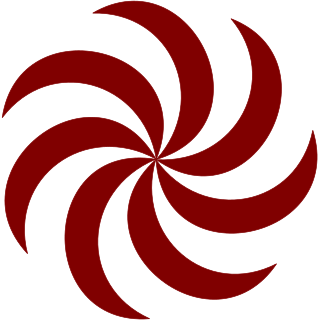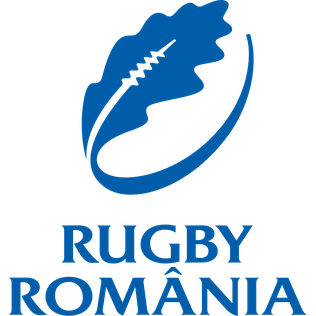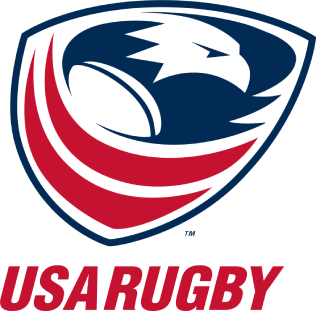
Rugby union football, commonly known simply as rugby union or more often just rugby, is a close-contact team sport that originated at Rugby School in the first half of the 19th century. Rugby is simply based on running with the ball in hand. In its most common form, a game is played between two teams of 15 players each, using an oval-shaped ball on a rectangular field called a pitch. The field has H-shaped goalposts at both ends.

The Georgia national rugby union team, nicknamed The Lelos, represents Georgia in men's international rugby union. The team is administered by the Georgian Rugby Union and takes part in the annual Rugby Europe Championship and the Rugby World Cup, which takes place every four years.

The Romania national rugby union team represents Romania in men's international rugby union competitions, nicknamed Stejarii, is long considered one of the stronger European teams outside the Six Nations. They have participated in all but one Rugby World Cup and currently compete in the first division of the European Nations Cup, which they won in 2017. Rugby union in Romania is administered by the Romanian Rugby Federation.

The United States men's national rugby union team represents the United States in men's international rugby union. Nicknamed the Eagles, it is controlled by USA Rugby, the national governing body for the sport of rugby union in the United States. USA Rugby is a member of Rugby Americas North, one of six regional governing bodies under World Rugby. Until rugby returned to Olympic competition, with sevens at the 2016 Rio Games, the United States was the reigning Olympic rugby champion, having defeated the one other competitor in 1920 and the two other competitors at the 1924 Summer Olympics.

The Spain national rugby union team, nicknamed Los Leones, represents Spain in men's international rugby union competitions. The team is administered by the Spanish Rugby Federation. The team annually takes part in the European Nations Cup, the highest European rugby championship outside the Six Nations. The national side is ranked 20th in the world.

The Russia national rugby union team, nicknamed Medvedi, represented Russia in men's international rugby union international competitions. The team is administered by the Rugby Union of Russia (RUR). The RUR is considered the official successor union of the Soviet Union by World Rugby and the combined CIS team which played in the early 1990s. Since 1992, the team has played as Russia. Its first test match as Russia was against the Barbarians in Moscow in June 1992 and the country's first test against an official Test nation was against Belgium later that same year.

Rugby union in Russia is a moderately popular sport. Russia was in 2011 ranked 20th worldwide by the World Rugby, having over three hundred clubs and close to 22,000 players nationally. Russian Rugby Championship is the top-level professional competition held in Russia. Krasnoyarsk, in the middle of Siberia, is traditionally the heartland of Russian rugby.

Rugby union is the national sport of Tonga. Tonga are considered to be a tier 2 rugby nation by the International Rugby Board.

Rugby union in Fiji is a popular team sport and is considered to be the national sport of the country. The sport was introduced to Fiji in the 1880s. Fiji is defined as a tier two rugby nation by World Rugby. The national team has competed at the Rugby World Cup and made it as far as the quarter-finals. Their sevens team is also noted for their success, winning multiple Olympic gold medals, World Rugby Sevens Series and Rugby World Cup Sevens.
The Didi 10 is a professional domestic rugby union club competition in Georgia. It is the top tier of rugby competitions in the country.

Rugby union in Armenia is a growing sport. The national team is currently unranked in the world rankings, which records only the top ninety-six countries. The governing body for Armenia is the Rugby Federation of Armenia, headquartered in Yerevan.

Rugby union in Portugal is a very prevalent sport, though still a long distance from association football. The sport is essentially amateur in Portugal, with some degree of professionalisation in its top flight league and the national rugby union team. The rugby union teams in Portugal are mostly university sides, from Lisbon, Porto and Coimbra, with multi-sport clubs like Benfica and Belenenses having rugby union collectivities.
The USSR national rugby union team represented the Soviet Union in rugby union until the early 1990s.

Lynn Howells is a Welsh rugby union coach, who until March 2018 was the head coach of the Romanian national team, haven been the manager of the national side for 10 months prior to his appointment. Howells, born in Maerdy in Rhondda Valleys, played flanker at his nearest club Tylorstown RFC, before playing for Penygraig RFC. There he was noticed by Pontypridd RFC, and represented one of the top clubs in Wales in 1971.

Rugby union in Azerbaijan is a growing sport. They are currently unranked in the International Rugby Board's world rankings, which ranks only the top ninety-five countries. The governing body for Azerbaijan is Azerbaycan Reqbi Federasiyasl.
Rugby union in Kazakhstan is a fairly popular sport. As of May 2018, they are ranked 61st by World Rugby, and as of June 2009, they had 2335 registered players and twenty clubs.

Rugby union in the Soviet Union was a moderately popular sport. It was most popular in the Georgian SSR; parts of the Russian SFSR such as Moscow and certain regions in Siberia like Krasnoyarsk; and Alma-Ata, the capital of the Kazakh SSR. Rugby enjoyed a more limited popularity in the Ukrainian SSR, Minsk in the Byelorussian SSR and parts of the RSFSR such as Leningrad and areas in Southern Russia, including Krasnodar. Rugby gained a significant following due to the vast size of the Soviet Union, but was never a major sport; despite many attempts to develop the sport, which Soviet citizens came to nickname the "leather melon" due to the shape of the ball. Still, an early championship in 1960 gives an idea of the sheer scale of Soviet rugby: one hundred teams from over thirty cities took part.
Viktor (Vito) Kolelishvili is a Georgian rugby union player. His position is flanker, and he currently plays for Clermont Auvergne in the Top 14 and the Georgia national team. He played for Georgia in the 2011 Rugby World Cup.
Irakli Machkhaneli is a retired Georgian rugby union player who played as a wing.
Milton Haig is a New Zealand rugby union coach and former player. He was the head coach of the Georgian national team that annually competes the European Nations Cup.















